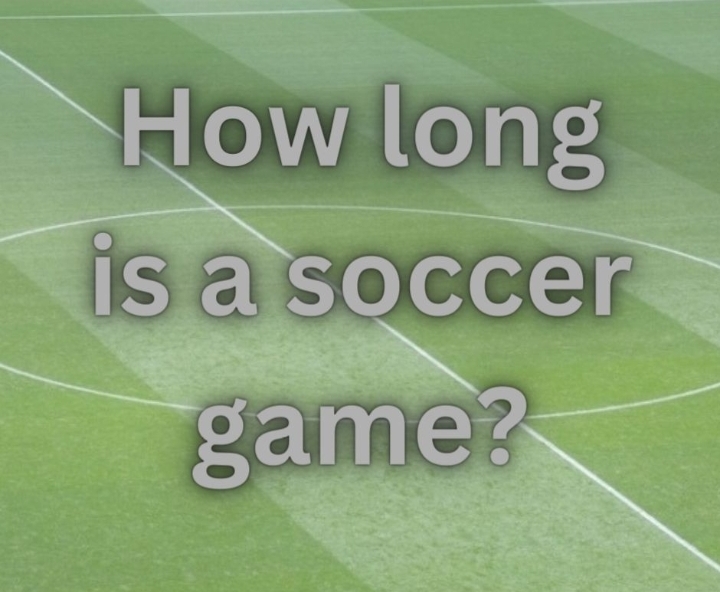The crack of a vuvuzela horn hits the air as South African fans rhythmically dance and sing in the stands. Meanwhile in England, fans barbecue in the parking lot tailgating before the big match. In Brazil, the infectious samba beat drives fans into a carnival-like frenzy during the game.
From choreographed chants in Japan to elaborate Italian tifo displays, soccer matches around the world explode with distinctive traditions and rituals. Soccer transcends borders, languages, and politics to engage over 4 billion fans globally.
This vast shared passion for the beautiful game creates a sense of community that unites cultures. Let’s embark on a journey across 15 countries to explore the captivating world of soccer fan culture, traditions, and fandom. Discover how the world’s game inspires both local pride and global connection.
England: Birthplace of the Beautiful Game
Soccer, or football as it’s known in most of the world, traces its origins to 19th-century England. The modern version of the sport developed in the industrial towns and villages that dotted the English countryside during this period. England is rightly considered the birthplace of soccer as we know it today.
As the homeland of soccer, it’s no surprise that the English have a deep and abiding love for the sport. Soccer is like a religion in England, woven into the fabric of society. Fans deeply follow professional club teams in the prestigious English Premier League, with loyalties passing from generation to generation. Major clubs like Manchester United, Liverpool, Arsenal, and Chelsea inspire local and global followings. The crowds sing popular chants and songs throughout the matches, creating an electric atmosphere.
Tailgating in the stadium parking lots before games is a cherished ritual for many English fans. They barbecue, play games, and drink with fellow supporters of their beloved club. The passion and community around English soccer are extraordinary, with the sport holding a special place in the nation’s heart. As the inventors of the modern game, the English helped soccer become the world’s most popular sport. Their loud fans and vibrant soccer traditions continue to captivate people everywhere.
Brazil: The Beautiful Game
In Brazil, soccer is like a religion. As the most successful national team with 5 World Cup titles, soccer is deeply ingrained into Brazilian culture and national identity.
Brazilians learn the game at a young age, honing their skills by playing beach and street soccer. This fosters the creative, free-flowing style that Brazilian teams are known for. Players like Pele, Ronaldo, and Neymar have become national heroes through their soccer exploits.
The atmosphere at Brazilian domestic league matches mirrors the country’s Carnival spirit. Fans sing and chant passionately, accompanied by samba drums and music. Dancing in the aisles provides a carnival-like backdrop.
Brazil’s rivalry with fellow soccer power Argentina also intensifies the experience. When the two countries meet, the matches crackle with intensity.
For Brazilians, soccer is known as o jogo bonito – “the beautiful game.” The style, culture, and emotion surrounding soccer in Brazil is truly one of a kind. As Pele once said, “In Brazil, soccer is not just a sport, it’s more than that. Soccer is a culture.”
Argentina: Passion and Pride
In Argentina, soccer ignites tremendous passion and national pride. Argentina has a storied soccer history, producing legends like Diego Maradona and Lionel Messi.
Diego Maradona almost has a god-like status in Argentina due to leading the national team to the 1986 World Cup title. His infamous “Hand of God” goal against England displays the resilience and gamesmanship Argentines admire in their soccer heroes.
Lionel Messi achieved his first World Cup triumph with Argentina in 2022, when they beat France in the final. Messi’s performance in the final, where he scored twice to help Argentina win 4-2 on penalties, was a significant factor in their victory.
The rivalry between Argentina and Brazil is one of the fiercest in soccer. Whenever these South American powerhouses square off, tempers run high on and off the field.
Argentina has the most passionate and vocal fans in the world. The stadiums echo with non-stop singing, chanting, jumping, and drumming. Fans unveil huge colorful banners and flags during games to showcase their support.
Soccer occupies a central place in Argentine culture and society. No matter where Argentines live in the world, they carry immense national pride in their soccer tradition and identity.
Italy: Historic Clubs and Ultra Fans
Italian soccer has a long and storied history. Italy’s top league, Serie A, was established in 1898. Some of the oldest and most successful clubs in the world play in Serie A, including Juventus, Inter Milan, AC Milan, and AS Roma.
Italians are passionate about the local club teams they support. These deep-rooted loyalties often follow regional lines. For example, tensions run high between northern clubs Inter Milan and AC Milan versus clubs from the south like Napoli.
Italy’s “ultra” superfans are some of the most extreme in Europe. These ultra groups lead massive choreographed displays involving thousands of fans, flags, banners, flares, fireworks, and smoke bombs. The elaborate pre-game rituals showcase their love for their clubs.
Italian fans also have no hesitation about pointing out poor performances. Unique chants. Italy has won four World Cup titles, most recently in 2006. Soccer remains an integral part of Italian culture and society.
Germany: Organization and Efficiency
German soccer reflects many of the national stereotypes – discipline, efficiency, and organization. The German national team plays a physical, tactical, and methodical style. They may not have the flashy star power of other countries, but German teams execute with brilliance on the pitch.
This precision is mirrored in the stadium atmosphere. German fans take great pride in being some of the most loyal supporters in the world. They loyally follow their local Bundesliga clubs through thick and thin. Fans participate in cheers and chants in an orderly, coordinated style during matches.
While German fans are not necessarily the loudest or wildest, they unconditionally support their national team. When Germany hosted the 2006 World Cup, the country came together as one. Over 200,000 fans packed Berlin’s “Fan Mile” during games in a patriotic sea of black, red, and gold.
Germany has won four World Cups, the most recent in 2014. Given the country’s soccer skill and economic might, Germany will remain a dominant force in the sport for decades to come. The future is bright for German soccer.
Spain: Tiki-Taka Style
Spain became a soccer powerhouse starting in the late 2000s in large part due to the “tiki-taka” style played by FC Barcelona and the Spanish national team. Tiki-taka involves short passing, movement, and keeping possession.
Spain’s run of three straight major tournament wins from 2008-2012 propelled tiki-taka to popularity around the world. Superstars like Andres Iniesta, Xavi, and David Villa led the way during this dominant era.
In Spain, the rivalry between mega clubs FC Barcelona and Real Madrid reached a fever pitch. When the two teams meet in El Clásico, the match ripples with intensity. Spanish fans are passionate about the teams they support, often down generational lines.
Unlike other European leagues, fan ownership structures are common in Spain. The fans own the clubs, like FC Barcelona and Athletic Bilbao. This creates a stronger sense of community and belonging.
Whether it’s the tiki-taka short passing style or the electric team rivalries, Spanish soccer culture attracts fans worldwide. The excitement and passion surrounding the sport in Spain is truly special.
Mexico: Fútbol Marks the Culture
In Mexico, soccer is not just a sport – it’s a defining part of the nation’s culture and identity. Mexicans refer to soccer as fútbol, showing its deep roots in the country.
Mexico’s passionate fan culture comes to life in the stadiums. Fans sing, chant, and yell throughout matches, accompanied by blaring horns and drums. They create an electric, intimidating atmosphere for opponents.
The national team inspires immense pride across Mexico. When Mexico faces off against arch-rival the United States, emotions hit a fever pitch. Thousands of fans flock to these intense matches waving Mexican flags and wearing the team’s iconic sombrero hats.
Even away from the stadiums, soccer penetrates Mexican culture. Games are discussed endlessly on sports radio shows. Neighborhoods come to a standstill when Mexico plays in the World Cup. For Mexicans, fútbol is not just a game, but a representation of their identity.
United States: Growing Prominence
While soccer still stands behind American football, basketball, and baseball in popularity in the U.S., the sport has seen explosive growth in recent decades.
The rise of Major League Soccer (MLS), the men’s and women’s national team’s success, and access to European matches on television have amplified interest. The U.S. hosted the hugely successful 1994 World Cup, which exposed the sport to a mainstream audience.
Also, Lionel Messi’s impact on MLS has been significant both on and off the pitch. His arrival has boosted ticket prices by as much as 1,700% in some cases, potentially generating $256 million in revenue for the league
In the stands, American fans have adopted supporter group traditions like those found overseas. Groups like the Seattle Sounders’ Emerald City Supporters feature drums, banners, scarves, and chants in European/Latin American style.
The U.S. women’s national team has been a pillar of excellence, winning multiple World Cups and Olympic gold medals since the 1990s. High-profile stars like Mia Hamm, Abby Wambach, and Alex Morgan have become household names.
While the U.S. has yet to fully embrace soccer as part of its cultural fabric, the pieces are falling into place to continue strengthening the country’s soccer footprint.
China: Investing for the Future
China’s soccer culture is still developing, but massive investment and strategic focus from the government aim to accelerate its growth.
The Chinese Super League has attracted high-profile stars like Hulk, Oscar, and Carlos Tevez with record-breaking salaries in recent years. Top European clubs like Manchester City have established academies in China to cultivate homegrown talent.
However, soccer fandom in China still centers primarily around international teams and players rather than domestic clubs. Most Chinese fans follow mega clubs like Real Madrid, Manchester United, and Liverpool from afar.
Attendance at Chinese Super League matches has been inconsistent. Fans have higher expectations as clubs recruit famous foreign stars, and empty seats are noticeable if teams underperform.
But with its massive population and resources, China has the potential to emerge as an international soccer powerhouse. The country hosted the women’s World Cup in 2007 and the men’s Asian Cup in 2004 on the way to building its soccer credibility. If the government’s investments pay dividends, Chinese soccer could grow exponentially.
Australia: Multicultural Fandom
Soccer sits behind rugby, Aussie rules football, and cricket in popularity in sports-mad Australia. But the world’s game has seen a boost in Australia based on the national team’s recent successes.
The Socceroos have qualified for the last four World Cups, reaching the Round of 16 in 2006. Their run in 2006 sparked intense national pride across the country as Australian soccer stepped onto the global stage.
The A-League professional competition continues to grow as well, attracting fans domestically and from abroad. Australia’s geographic isolation from other soccer powers means fewer opportunities to see the world’s best clubs live.
Like the nation as a whole, soccer fans come from an array of ethnic backgrounds. These multicultural influences bring flavors of fan culture from across Europe, South America, and around the globe. The scenes at A-League matches demonstrate how integrated the sport has become in Australia’s diverse society.
If soccer’s popularity trajectory continues, the Socceroos and A-League clubs will assume an even greater presence in Australia’s crowded sports landscape.
Japan: Baseball vs Soccer
Japan’s professional soccer league, the J-League, launched in 1993 as the national sport of baseball declined in popularity. While baseball still leads as the favorite sport, soccer has become a solid #2 and continues to gain ground.
Unlike Europe’s community-owned clubs, J-League teams are mostly owned by large corporations like Honda, Panasonic, and Sony. This corporate nature affects the fan experience compared to the deep grassroots loyalty seen in places like England and Germany.
However, Japanese fans have developed an impressive supporter culture in the J-League’s short history. Fans borrow traditions like songs, chants, and banners from abroad. Coordinated cheering and flag-waving give J-League matches a great atmosphere.
The national team also inspires pride by qualifying for 6 straight World Cups between 1998-2018. Players like Hidetoshi Nakata, Keisuke Honda, and Shinji Kagawa have gained global fame.
While still behind baseball, soccer has carved out a prominent place in Japanese sports culture. The J-League and passionate fans have fueled its growth as new generations embrace the world’s game.
Kenya: English League Fever
Soccer enjoys massive popularity across Africa, and Kenya is no exception. Unlike other soccer-mad nations, Kenyan fans don’t center their passion around the local league or national team. Instead, EPL (English Premier League) fever grips the country.
Fans wake up early on weekend mornings to crowd around TVs showing EPL matches in pubs and community centers. Manchester United, Arsenal, Chelsea, and Liverpool have huge followings. Young boys in remote villages can name all the players and stats from top EPL clubs.
While the local Kenyan Premier League draws modest crowds, fans reserve their greatest passion for English teams thousands of miles away. Many support clubs based on historic colonial ties with Britain and access to EPL on television.
Beyond just watching matches, Kenyan fans incorporate local musical and cultural elements into their soccer experience. Supporters create their costumes, and songs, and choreograph dances during games both at stadiums and public screenings. This fan culture makes following European soccer uniquely Kenyan.
South Africa: Vuvuzelas and Dance
South Africa is the only African nation to host the World Cup, highlighting the country’s deep soccer roots. The buzzing vuvuzela horns that defined the 2010 World Cup arise from South African soccer tradition.
While not an international powerhouse, Bafana Bafana (the national team) sparks great pride across the country during tournaments. South African club teams like Kaizer Chiefs and Orlando Pirates boast dedicated fans.
Drawing inspiration from Brazil, South African fans incorporate music, dance, and costumes into the stadium atmosphere. Drums pound throughout matches as fans rhythmically dance and sing. Supporters often wear colorful outfits and headdresses mirroring their team’s colors.
South Africa’s diversity also creates an electric fan culture. The shared experience of supporting Bafana Bafana unifies people across ethnic lines. Soccer provides common ground and community.
Though often overshadowed internationally, South African soccer culture thrives through the distinctive energy and unity it breeds among the country’s diverse population. The unmistakable blare of the vuvuzelas represents this passion.
Saudi Arabia: New Horizons
Soccer has historically trailed behind sports like camel racing and falconry in popularity in Saudi Arabia. Only in recent years has soccer gained wider appeal in the conservative country.
Religious edicts have shaped the growth of the game and fan culture. To avoid intergender mixing, women have been barred from attending matches and playing soccer. The country only launched a women’s national team in 2021.
However, the government aims to expand soccer as part of its Vision 2030 modernization initiative. New academies are cultivating talent, the Saudi Pro League signed international stars like Cristiano Ronaldo, Neymar, Benzema, and Ngolo Kante, and the country hosted the Spanish Super Cup in 2020, 2022, 2023, and 2024.
While still developing, soccer provides a source of national pride for Saudis. The men’s team qualified for 5 straight World Cups between 1994-2006. A promising new generation of players could restore them as Asian competitors.
If recent investments like $600 million per year in developing soccer pay dividends, the sport could transform from a niche pastime to a flourishing passion in Saudi Arabia.
Conclusion
This tour around the globe shows soccer’s incredible cultural impact and how fan traditions unite communities. While each country has its distinctive style, passion for the beautiful game crosses borders.
In England, the birthplace of modern soccer, fans loyally follow their club with almost religious fervor. Brazilians harness the free-flowing flair of beach and street soccer in games, playing with a joyous spirit. Argentines take deep pride in the grit and passion of national heroes like Maradona.
German fans may not be the loudest, but they support their teams through thick and thin. Spain’s tiki-taka style soccer has revolutionized the sport. Mexico’s fan culture exudes the nation’s identity through every chant.
Each region adds unique traditions, from Italian ultras to South African vuvuzelas to English pub tailgating. But what underlies each expression of fandom is a shared love of the game. Soccer transcends differences in language, politics, and culture.
From the packed stands of Europe’s historic stadiums to remote villages crowded around TVs in Kenya, soccer enjoys unmatched global devotion. The world’s game has an unparalleled place in international culture and society. Soccer truly brings the world together.
Read More: The Exciting Growth and Achievements of Women’s Soccer
Author







